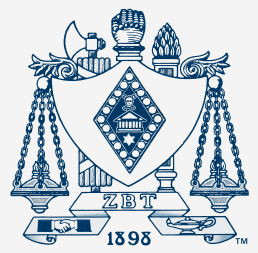Features
A fraternity bond of 50-plus years
Issue: Spring 2023
‘I never envisioned that this would go beyond graduation:’ The American University ZBT brothers helped save one brother’s business, chipped in to buy a car for another and created a scholarship for students in need.
Originally published by The Washington Post; photos by the Post
The American University fraternity brothers, now in their 70s and 80s, returned to campus last October — their hair mostly gray, if they had any left at all. They each carried emotional battle scars from decades of life.
Of the original 200 Zeta Beta Tau members in the group, about 170 are still alive. They marveled at being back in the place they met when they were barely men.
The university’s president, Sylvia M. Burwell, welcomed the group back to campus Oct. 15 and was struck by the gravity of the reunion.
“I am thrilled,” Burwell said, holding back tears, “to see you all, and how you stay together.”
The group, made up of men who graduated from American University between 1960 and 1972, have punctuated the longevity of their friendship with acts of giving. They helped save a brother’s business that was going under, chipped in to buy a car for another member who was down on his luck, created a scholarship at the university for students in need and raised money for a school in Ecuador. They have also stood by one another through turmoil and triumphs.
“This group is special,” Burwell said in an interview with The Washington Post. “ZBT helped set the culture of what these organizations should be. They are about community, and a group of people that support each other.”
When it comes to Greek life, she continued, “I believe this is the example.”
David Kanter, 1964, now age 80, founded the Beta Psi Chapter of ZBT at American University in 1961 and was the fraternity’s first president.
“I never envisioned that this would go beyond graduation into a group that would stick together and take care of each other,” he said. “Fraternities are not all about exclusivity and drinking and partying. It can have a long-term meaning, and that is exactly what this has been.”
Fraternity culture has been called into question in recent years on campuses across the country. Out-of-control hazing has turned fatal, incidents of sexual assaults and alleged druggings have mounted, and examples of racism, classism and other disturbing themes have come to the sur-face.
This group has tried to embody the inverse.
ZBT was founded in 1898, and while proud to be the world’s first Jewish fraternity, the Beta Psi Chapter welcomed people of all faiths and backgrounds.
“I was the second African American in the group,” said Chuck Hill, age 76, who graduated in 1967. “I never felt alienated.”
“The camaraderie that has developed over the years has been as strong as any that I’ve experi-enced in many of the military organizations that I’ve had the honor to serve in,” said Hill, a retired Air Force pilot.
When one brother’s small bookstore in Lenox, Mass., was on the brink of bankruptcy, the fraternity — along with members of the local community — rallied to save it. The story became the subject of a documentary.
“When times come up that the group needs to support someone, there’s no shying away,” Hill said.
The brothers have also supported the community. Since 1998, they have maintained a scholarship fund and awarded a four-year partial scholarship to more than 20 university students based on financial need. Legacies of the fraternity are given priority, but the scholarship is also open to other students who meet their academic and financial requirements.
“All brothers contribute to whatever extent they can,” said Howie Soltoff, 1968, a member of the fraternity who serves as a liaison with American University.
The group has funded educational programs elsewhere, too. When one brother, Harry Lehrer, died in 2004 at age 57, the brothers arranged an annual golf event in his memory. They have been raising funds for a school in Ecuador — where Lehrer’s daughter worked as a teacher.
Additionally, the brothers have helped one another with serious personal matters over the years— including the loss of children and spouses, as well as health challenges, financial woes and legal issues.
“There have been many instances where I have helped and represented brothers and their fam-ily members confidentially, in matters of the most serious nature of one’s life,” said Ted Simon, 72, who graduated in 1971 and is a lawyer and former president of the National Association of Criminal Defense Lawyers. “I’m sure I’m not alone.”
The brothers are an unusual bunch, Simon said, in part because they are different from one another in many ways.
This group, despite the vast political differences and divides, different social and cultural histo-ries and experiences, significant age differences, and significant economic disparities, have remained a true band of brothers,” Simon said. “I don’t know people who have remained with a functioning group of this size for this long.”
Simon created an email group 15 years ago that has helped keep the brothers in contact.
At the reunion, attendees reminisced and shared stories, including a classic tale in which Kanter chased a softball into Vice President Lyndon B. Johnson’s front yard and was confronted by Secret Service officers. Johnson lived at the time in the Spring Valley neighborhood near the university.
David Aldridge, a former Washington Post writer and American University alumnus, presented Kanter with a softball that has Johnson’s signature, as well as those of former AU president Hurst Anderson and Mickey Mantle, who was a famed New York Yankees player.
Participating in the reunion “was delightful,” said Aldridge, who knows some of the fraternity brothers from the alumni community. When they asked if he would present the softball, “I was happy to do it.”
“It’s very touching that these guys are still together after all these decades,” he added.
Following the campus event, the brothers spent the evening celebrating their friendship and dancing to The Van Dykes — a Baltimore rhythm and blues band that has played for the fraternity since the early 1960s.
The October event was one of many gatherings the brothers have had since college, though the regular reunions didn’t start until long after they left the university.
Ron Nissenbaum, age 75, was one of the people who brought the group back together. It started in 1985, when Nissenbaum ran into a fraternity brother whom he had not seen since graduating in 1968.
As the two men caught up, Nissenbaum decided right that then he would organize a reunion. That year, ZBT held its first one, which drew close to 200 people.
The gathering was such a hit, Nissenbaum said, that not long after, “I started getting calls from the guys saying we want to have another one.”
And so they did — and so began a tradition of gathering on a regular basis and being in frequent communication.
As the men moved through life, they have remained one another’s go-to guys for issues large or small.
“There are people that have had hard times financially, and there are brothers that have anonymously supported them,” said Simon, adding that several brothers contribute addi-tional funds toward reunions to ensure every-one is able to attend.
Simon said this group is juxtaposition to the stories of “fraternity hazing, death and sexual abuse.”
The brothers hope their bond sets an example for what a fraternity can and should be like.
“Some things change; some things never do and never will,” Simon said.
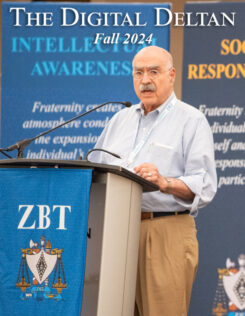 Fall 2024
Fall 2024 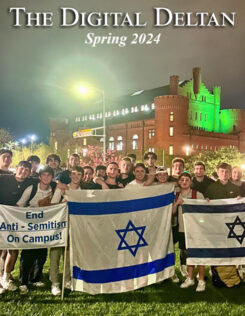 Spring 2024
Spring 2024 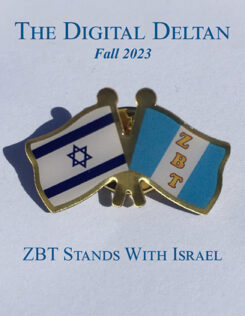 Fall 2023
Fall 2023 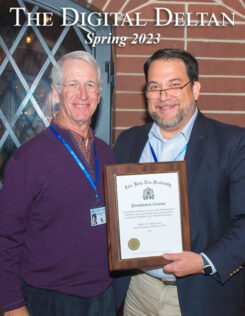 Spring 2023
Spring 2023 